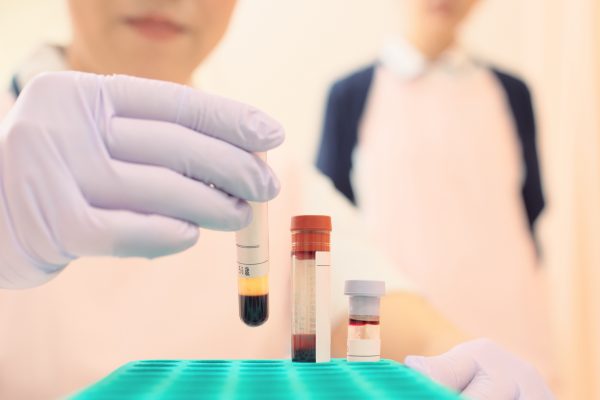
Based on the encouraging results of the phase 3 XTEND-1 trial, recently published in The New England Journal of Medicine, the FDA has approved efanesoctocog alfa (ALTUVIIIO™) for the treatment of patients with severe haemophilia A. This trial showed that, for the first time, a once-weekly dose of factor VIII replacement provides powerful bleed protection for patients suffering from this disease.
Haemophilia A is a rare, lifelong condition in which the ability of a person’s blood to clot properly is impaired. This leads to excessive bleeding, including spontaneous bleeding into joints, resulting in joint damage and chronic pain. Nowadays, patients with severe haemophilia A are treated with factor VIII replacement therapy to prevent bleeding. However, these agents have a limited half-life because of their interaction with endogenous von Willebrand factor (VWF), bringing about a considerable treatment burden. Efanesoctocog alfa (ALTUVIIIO™) is a first-in-class factor VIII replacement drug that has been modified to prevent binding to endogenous VWF, leading to a 3 to 4-fold longer half-life. Based on the encouraging results of the phase 3 XTEND-1 trial, recently published in The New England Journal of Medicine, the FDA has approved efanesoctocog alfa to treat patients with severe haemophilia A.1,2
The phase 3 XTEND-1 study was an open-label, non-randomised interventional study assessing the safety and efficacy of once-weekly efanesoctocog alfa in people ≥12 years of age (n=159) with severe haemophilia A who were previously treated with factor VIII replacement therapy. In the prophylaxis arm A (n=133), patients who had received prior factor VIII prophylaxis were treated with once-weekly efanesoctocog alfa prophylaxis (50 IU/kg) for 52 weeks. Arm B (n=26) included patients who received on-demand efanesoctocog alfa followed by once-weekly prophylaxis with efanesoctocog alfa (for 26 weeks each). The primary efficacy endpoint of the study was the mean annualised bleeding rate (ABR) in arm A. The key secondary endpoint was studied in a subset of patients in arm A who had participated in a previous observational study. It consisted of an intra-patient comparison of the ABRs during the period the patients received efanesoctocog alfa prophylaxis vs. during the previous factor VIII prophylaxis. The XTEND-Kids study included previously treated patients younger than 12 years (n=67) with severe haemophilia. Patients received once-weekly efanesoctocog alfa prophylaxis (50 IU/kg) for 52 weeks.1,2
The study met its primary endpoint, with once-weekly efanesoctocog alfa providing significant bleed protection for people with severe haemophilia A, with a mean ABR of 0.70 and a median ABR of 0. The trial also met the key secondary endpoint, with a significant reduction of 77% in ABR with efanesoctocog alfa vs. prior factor prophylaxis. Additional data showed that efanesoctocog alfa prevented the occurrence of joint bleeds, with a median annualised joint bleeding rate of 0. Moreover, efanesoctocog alfa delivered normal to near-normal factor activity levels (over 40%) during most of the week. Interim data from XTEND-Kids showed that children younger than 12 years of age experienced a mean ABR of 0.5 and a median ABR of 0. Efanesoctocog alfa was well-tolerated and inhibitor development to factor VIII was not detected. The most common side effects (>10%) of efanesoctocog alfa were headache and arthralgia.1,2
Efanesoctocog alfa is the first and only haemophilia A treatment that delivers normal to near-normal factor activity levels (over 40%) for most of the week with once-weekly dosing, and significantly reduces bleeds compared to prior factor VIII prophylaxis. The high-sustained factor activity levels that can be achieved with efanesoctocog alfa have the potential to change the haemophilia treatment landscape, bringing hope to patients suffering from this disease.1,2
Reference